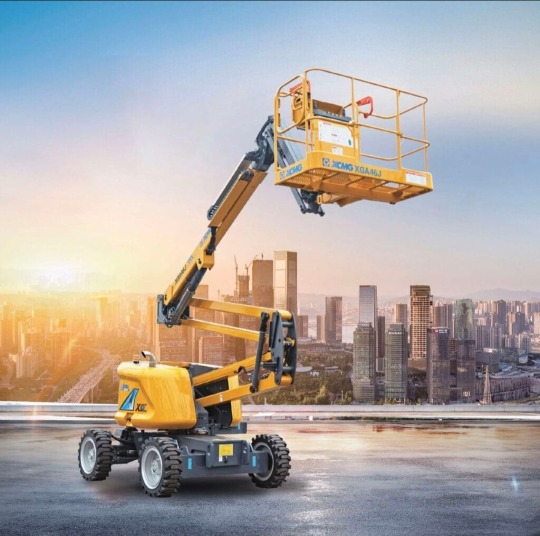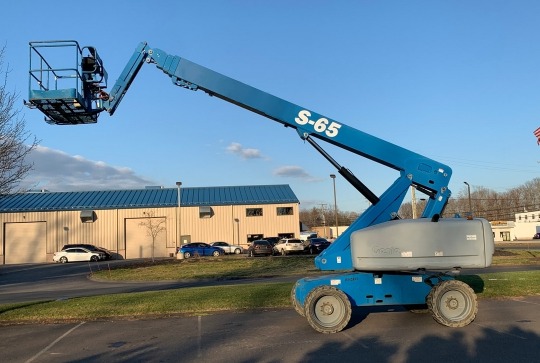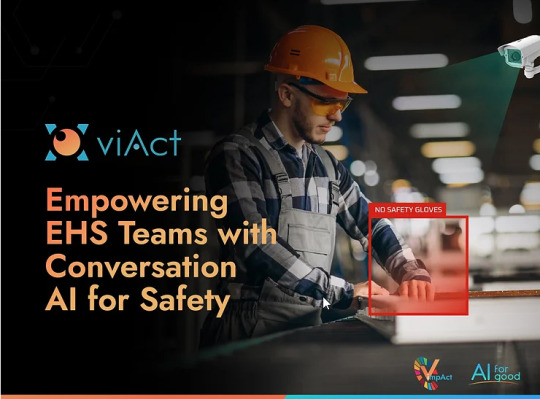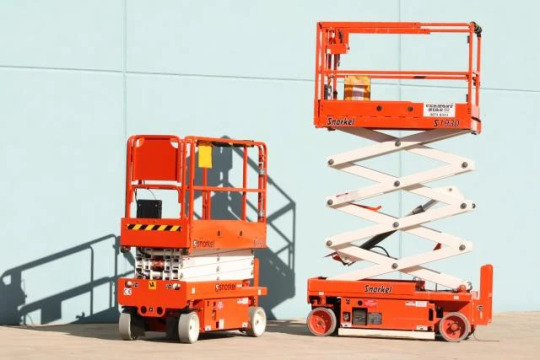#MEWP training
Explore tagged Tumblr posts
Text
MEWP Training for Highway Projects | Safety & Certification
Learn how MEWP operator training reduces hazards in highway construction. Get certified with online and on-site MEWP training courses for safer projects. Highway construction projects are among the most hazardous work environments in the infrastructure industry. From moving traffic to elevated tasks, workers face multiple dangers daily. One of the most effective ways to mitigate these risks is by using Mobile Elevating Work Platforms (MEWPs)—but simply using the equipment isn’t enough. MEWP operator training is critical to ensure safety, compliance, and operational success.

For more information click here: https://bit.ly/mewp-training-for-highway-projects
#mewp training certificate#mewp training online#mewp operator training#mewp operator training course#mewp training#mewp certification#mewp course#mewp online training#online mewp training#mobile elevated work platform training#mewp training courses#MEWP training#MEWP Operator Certification Training#MEWP certified training center#Onsite MEWP Training
0 notes
Text
Get expert MEWP asset management, maintenance, repairs & rental solutions. Maximize uptime, ensure safety & reduce costs with Equipr’s MEWP services! Equipr is your trusted partner in total asset management, offering comprehensive solutions that keep your MEWPs operating smoothly, efficiently, and profitably.

#Mewp equipment manufacturers#mewp training#mewp training certificate#mewp operator training#mewp training near me#MEWP Asset Management#Asset Management Solutions#Repair Services#Yard Services#maintenance services#Remote Monitoring System
0 notes
Text
MEWP Training Near Me | UTN Training
Looking for top-quality MEWP training near you? MEWP training courses are designed to ensure you and your team are fully equipped with the skills and knowledge needed to operate MEWPs safely and efficiently. So check out the UTN Training website for more info.
0 notes
Text
dude i want to learn how to use a boom lift so fucking bad look at these fucking beasts


0 notes
Text

IPAF Training: A Key to Safer Work at Height Operations
In industries where working at height is part of the daily routine, it becomes essential to be extra cautious. Safety is a priority for jobs performed in construction, facilities management, warehousing and more. When it comes to performing tasks at heights, Mobile Elevated Work Platforms (MEWPs), such as scissor lifts and cherry pickers make it easier for professionals to perform these elevated tasks. Having said this, these professionals require proper training as these machines can pose serious risks. This is where IPAF training plays a crucial role in protecting lives and promoting safer work environments.
What is IPAF Training?
The International Powered Access Federation (IPAF) is a globally recognized authority for training individuals who operate, supervise, or manage the use of MEWPs. Those opting for IPAF training courses and successfully completing them are able to safely operate various access platforms, inspect equipment before use, and respond correctly to potential hazards.
The Link Between Training and Safety
Workplace accidents involving MEWPs often occur due to:
Lack of operator awareness
Incorrect machine selection
Poor pre-use inspections
Inadequate understanding of ground conditions and surroundings
IPAF training addresses all of these areas through a structured mix of theory and practical sessions.
Key safety benefits of IPAF training
Proper equipment handling
Trained operators understand the limitations and capabilities of different MEWP types—whether it’s a static boom (1B), mobile vertical (3A), or mobile boom (3B). So, when professionals learn through these courses, they are able to use the machines correctly and in the right environment.
Accident prevention through risk awareness
IPAF courses teach hazard identification and safe planning techniques. Operators learn to assess their surroundings for power lines, unstable ground, overhead obstructions, and other potential dangers.
Harness use and fall protection
Courses like the Harness Awareness and User modules ensure that those using MEWPs understand how to properly wear and inspect fall protection gear, minimizing fall-related injuries.
Safe loading and transport
For companies that move access platforms between sites, the IPAF Load & Unload course ensures that equipment is transported safely, reducing the risk of accidents before and after MEWP use.
All in all, IPAF training is more than just a certification—it’s a critical step toward reducing workplace accidents, protecting workers, and ensuring operations run smoothly and safely. If you wish to learn these courses or want to have more information about these, you can visit our website - https://www.kentectraining.co.uk/our-courses/category/ipaf
#uk#kentectraining#constructiontraining#certificationcourse#cherry picker training#ipaf training courses#Ipaf Courses#Ipaf Training Kent
0 notes
Text
Understand MEWPs – Operate Safer, Smarter, and with Confidence
Working at height? Make safety second nature. Our Understanding Mobile Elevated Work Platforms (MEWPs) course provides essential knowledge on safe operation, hazard recognition, and proper equipment use. Ideal for operators, supervisors, and safety professionals, this training supports compliance and reduces job site risks.
Build confidence. Stay compliant. Keep crews safe.
👉 Start Learning About MEWPs Today
#WorkplaceSafety#MEWPTraining#ConstructionSafety#ElevatedWorkPlatforms#OnlineSafetyTraining#HeightSafety#OperatorTraining#SafetyFirst#ComplianceTraining#TrainToWorkSafe
1 note
·
View note
Text
Enhancing Safety with EHS Solutions for Construction
Safety and efficiency will never be an issue while completing any industry. The construction industry is especially a field where danger can arrive anytime. An EHS Solution for Constructionwould be a great deal for the safe and smooth finishing of every project. EHS Solutions uses technology, data, and management systems to produce safer work environments and optimize overall operational performance.

What is an EHS Solution?
This includes equipment as well as processes for monitor and monitor and improving safety as well as compliance on any building work site. It mainly represents three main categories which:
Environment: Does not disturb the environment
Health: Health and welfare of workers
Safety: Avoids work-site accidents and compliances with regulatory regulations
EHS solutions enable construction businesses to monitor compliance with standards relating to safety and production operations.
The Role of EHS Solutions in Construction
Construction sites are dynamic and, therefore, pose the biggest challenge of managing safety. EHS solutions ensure that risks with the potential to cause an accident are identified and mitigated properly after analysis.
1. Real-time hazard monitoring
EHS solutions exploit state-of-the-art technology. One of them is an IoT sensor and video analytics at the construction site for observation. They can discover instability in the structure or machinery failure or dangerous unsafe behavior among workers and raise an instant alert to concerned parties.
2. Compliance Management
The most stressful task is keeping all those environmental and safety regulations straight. By having EHS solutions decreases the burden by tracking your compliance requirements, keeping your required records, and even automating your documentation, that doesn't happen.
3. Worker Training and Safety Awareness
A modular approach can include modules for training a worker regarding the hazards of the work environment, usage of PPE, and emergency procedures. Therefore, it makes safety not only about rules but also a culture of awareness.
4. Incident Reporting and Analysis
In case an accident occurs, EHS solutions make it easy to report incidents, analyze the causes, and take necessary steps to avoid similar incidents again.
Benefits of Safety Management Systems
Here are a few safety management systemfactors that improved work efficiency in the construction industry:
Reduced Accidents: By continuously monitoring and analyzing hazards, EHS solutions help reduce accidents, injuries, and fatalities on construction sites.
Enhanced Compliance: Keeping up with ever-changing regulations is made easier through automated tracking, documentation, and reporting.
Operational Efficiency: EHS solutions not only ensure safety but also optimize workflows and improve overall site performance.
Improved Worker Morale: Workers feel safer and more confident knowing that comprehensive safety measures are in place.
Conclusion: The Safe Future of EHS Solution
EHS solutions are more than just tools they’re a commitment to safety, health, and the environment. For construction projects, they provide a way to prevent accidents, ensure compliance, and promote a culture of safety. Similarly, for retailers, EHS solutions enhance operational efficiency while maintaining safety standards.
viAct is offering innovative EHS tools to the construction and retail industries, thereby providing a reliable and innovative solution for EHS. Its AI-powered monitoring, detection of hazards, and safety management system of compliance are making places safer and smarter. Join the journey into a safer future today itself with viAct!
Visit Our Social Media Details :-
Facebook :- viactai
Linkedin :- viactai
Twitter :-aiviact
Instagram :-viactai/
Blog Url :-
Safeguarding Workspaces: AI-driven Proximity Monitoring Solutions
The Role of AI in Mobile Elevating Work Platform (MEWPs) Safety
0 notes
Text
Affordable IPAF Training Courses at UTN Training
Looking for competitive prices on IPAF training? UTN Training offers high-quality, accredited IPAF courses to help you operate powered access equipment safely and efficiently. Delivered by expert trainers, our courses meet industry standards and ensure you gain valuable skills and certification. Explore our range of courses and find the right one for your needs today! #IPAFTraining #HealthAndSafety #UTNTraining
Visit our website now to check IPAF course prices and book your spot today!
0 notes
Text
Join expert-led MEWP training courses near you or onsite! Get your MEWP operator certification fast. Boost job safety with certified training today! The MEWP (Mobile Elevating Work Platform) Operator Training equips workers with essential skills and knowledge for the safe inspection, maintenance, usage, and operation of various MEWPs.

#mewp training#mewp training certificate#mewp training online#mewp operator training#mewp operator training course#mewp certification#mewp course#mewp online training#online mewp training#mobile elevated work platform training#mewp training courses#MEWP Operator Certification Training#MEWP certified training center#Onsite MEWP Training
0 notes
Text
Get MEWP Operator Certified with Evolution Industrial Training. Enhance safety, ensure compliance, and unlock better job opportunities. Enroll today! Whether you're a beginner or an experienced operator, our training equips you with the skills and certification needed to work efficiently and safely.

#mewp operator safety training#mewp operator training course#mewp operator safety training course#MEWP Operator
0 notes
Text
Safety at New Heights: Comprehensive Working at Heights Training
Working at heights is an integral part of many industries, from construction and maintenance to telecommunications and wind energy. However, it also presents significant risks. Proper training is essential to ensure the safety and well-being of workers who operate at elevated levels. Comprehensive working at heights training provides the knowledge and skills necessary to minimize hazards and promote a safe working environment.
Understanding the Risks
The first step in effective training is understanding the risks associated with working at heights. Falls from heights are a leading cause of workplace injuries and fatalities. Training programs emphasize the importance of recognizing potential hazards, such as unstable surfaces, inadequate fall protection, and environmental conditions like wind or rain. By identifying these risks, workers can take proactive measures to prevent accidents.
Fall Prevention and Protection
A major focus of working on heights training is on fall prevention and protection. Trainees learn how to use personal protective equipment (PPE) such as harnesses, lanyards, and anchor points correctly. Instruction on selecting and inspecting fall protection gear ensures that equipment is in optimal condition and suitable for specific tasks. Additionally, training covers the proper setup and use of scaffolding, ladders, and mobile elevating work platforms (MEWPs), emphasizing stability and secure placement.
Safe Work Practices
Adopting safe work practices is crucial for reducing the risk of falls. Training programs teach workers how to plan and organize tasks to minimize exposure to height-related dangers. This includes maintaining a clean and organized work area, using appropriate signage and barriers, and following established protocols for working near edges or open floors. Emphasis is also placed on teamwork and communication, ensuring that workers coordinate effectively to manage risks.
Emergency Procedures and Rescue Plans
Despite the best preventive measures, emergencies can still occur. Working at heights training includes comprehensive instruction on emergency procedures and rescue plans. Workers learn how to respond to fall incidents, including the use of rescue equipment and techniques for safely recovering a fallen colleague. Regular drills and simulations help reinforce these skills, ensuring that workers are prepared to act swiftly and effectively in an emergency.
Compliance and Legal Requirements
Compliance with legal and regulatory requirements is a key component of working at heights training. Programs provide an overview of relevant safety standards and regulations, such as those set by OSHA or other governing bodies. Understanding these requirements ensures that workers and employers adhere to best practices and legal obligations, reducing liability and promoting a culture of safety.
working on heights training is essential for safeguarding workers and preventing accidents. By focusing on risk identification, fall prevention, safe practices, emergency response, and compliance, these programs equip workers with the knowledge and skills needed to perform their jobs safely and efficiently. Investing in comprehensive training not only protects workers but also enhances productivity and fosters a safer working environment.Safety at New Heights: Comprehensive Working at Heights Training
0 notes
Text
IPAF Course Near Me | UTN Training
Looking for top-quality IPAF Course near you? In this course is designed to provide training and certification for safely operating aerial work platforms, such as cherry pickers and scissor lifts. Visit our website to get more info.
0 notes
Text
Scissor Lift Training Facts
Numerous tasks require special skills and safety awareness. The “Occupational Safety and Health Administration (OSHA)” offers such training to employees, supervisors, and even employers both offline and online. Obtaining the desired certification by taking a test at the end of the training is essential. It may be a prerequisite for employment in certain sectors and even a necessity after gaining employment. The little-known scissor lift training is one such training that does not get a lot of publicity but is essential nevertheless.
It suffices to know that scissor lifts are a specific type of aerial lift. They are usually used for installing signs at a height, construction, and maintenance. While not as tall as a boom lift, users can scale a considerable height of 20 to 50 feet. Apart from the outdoors, workers may also use such lifts for interior projects. The retail and manufacturing industry uses the lifts frequently to complete varied tasks.
The training details may be found in OSHA 29 CFR 1926 Subpart L. This training course is not too extensive though. On the contrary, it may be completed within 2 hours. The training can be taken online, thus ensuring no loss of time or absenteeism from the workplace. Knowing that the trainee does not have to sit through the training in one go is further beneficial. Instead, one can log off and on conveniently without losing precious minutes.
The topics covered by the training course include the following:-
· Introduction to Scissor Lifts
· Statistics on Injury and Fatality
· How Scissor Lifts Work
· Scissor Lift: Safety Regulations
· Mobile Elevating Work Platforms (MEWP) Classifications
· Specific Components
· Guardrails
· Guardrail Specifications
· Fall Protection
· Scissor Lift Platforms
· What Is an Entity?
· List of Entities
· Key Terms and Definitions
Learning how to use the Scissor lift safely is of utmost importance. The safety rules and purpose can be understood and implied by training successfully. The following topics are covered to learn about how to operate the lifts safely
· Safe Use of the Program
· Operator Qualification and Training
· Training Components
· Worksite Hazards
· What to do Before Operation
· Risk Assessment at the Worksite
· Safe Positioning
· Rescue Plan Considerations
· Manufacturer Manuals
· Record Keeping
· Scissor Lift Modifications
An extensive training course consists of a written component that may be taken online, followed by an onsite training that has to be endorsed and arranged by the employer. A trained employee may require a refresher course when there are changes at the site at present multiple risk factors. The new hazards, use of new & updated equipment, and inadequacies are noted in the employee’s skill levels.
People engaged in trenching and excavation require patience, attention to detail, and persistence. Such individuals need to complete the OSHA excavation training successfully.
0 notes
Text
What is IPAF Training and How It is Beneficial?
If you've ever operated or worked across powered access equipment, you've likely encountered the term 'IPAF training' or IPAF training courses. This training is the industry standard training for using mobile elevating work platforms. Employers must legally provide professional IPAF training to their employees, ensuring they can safely and effectively operate this equipment. According to law, it is essential to demonstrate competence in securely handling these platforms.
What is an IPAF Training?
An IPAF training course, provided by the International Powered Access Federation (IPAF) teaches individuals how to safely and effectively operate mobile elevating work platforms (MEWPs) such as cherry pickers, scissor lifts and boom lifts. These courses are designed for service technicians, operators, demonstrators, managers, supervisors, instructors and installers.
Upon completing MEWP training through an IPAF-accredited provider and passing both theory and practical tests, participants receive a Powered Access Licence (PAL) card. This digital card certifies that they have undergone rigorous IPAF training and are qualified to effortlessly operate the MEWPs. The PAL card is globally recognized, although it expires after five years and requires renewal through a refresher course.
The Ultimate Benefits of the IPAF Training Course
MEWPs (Mobile Elevating Work Platforms) are crucial for accessing difficult areas on construction sites however, their size, weight and mechanical complexity also pose significant hazards. Proper and professional training for MEWP operators is vital for several reasons:
1. Help Participants learn the skills required to operate the platform safely: IPAF training allows operators to gain the knowledge and skills to safely use MEWPs. Additionally, positioning the machinery correctly for maximum safety of both the user and bystanders. Safety also involves selecting the appropriate lanyard and safety harness for the platform use.
2. Ensures the safety of other people working around MEWPs: Large machinery poses risks to both operators and bystanders, hence, taking an IPAF training course by Kentec Training becomes crucial. IPAF training equips operators to identify potential hazards and respond effectively in emergencies, ensuring immediate risk recognition and appropriate action.
3. Offers skills and training to identify hazards: IPAF training is necessary for recognizing hazards and developing rescue plans that can be quickly executed onsite. These plans will help in safely rescuing an operator in emergencies such as if they get trapped between a platform and a building, ensuring prompt and effective response without worsening injuries.
Kentec Training offers a range of IPAF training courses in different categories to be trained to either an operator or demonstrator level.
0 notes
Text
Efficient Scissor Lift Hire Services for Your Project Needs
Welcome to our comprehensive guide on efficient scissor lift hire Melbourne services. In today's fast-paced world, where time and efficiency are of the utmost importance, it's crucial to have access to reliable equipment that can help you complete your projects effectively.
This blog aims to provide you with all the necessary information to understand the benefits and considerations when hiring a scissor lift for your project needs.
I. Understanding Scissor Lifts
A. Definition and Function:
A scissor lift is a type of mobile elevated work platform (MEWP) that uses a folding support mechanism to raise and lower a work platform vertically. It consists of interlocking cross-sections that resemble a scissor mechanism, hence the name. Scissor lifts are commonly used in construction, maintenance, warehousing, and other industries to provide safe and efficient access to elevated work areas.
B. Types of Scissor Lifts:
There are several types of scissor lifts available in the market, each designed to meet specific requirements. Here are some common types:
1. Electric Scissor Lifts:
These lifts are powered by electricity and are ideal for indoor use. They produce zero emissions, operate quietly, and have lower maintenance requirements compared to other models.
2. Diesel Scissor Lifts:
Diesel-powered scissor lifts are suitable for outdoor and rough terrain applications. They offer higher lifting capacities and can handle uneven surfaces with ease.
3. Rough Terrain Scissor Lifts:
As the name suggests, these lifts are designed to navigate challenging terrains, such as construction sites. They have sturdy tires, 4WD capabilities, and a robust construction to handle rough conditions.
4. Indoor Scissor Lifts:
Indoor scissor lifts are specifically designed for use in confined spaces, such as warehouses or narrow aisles. They are compact, lightweight, and offer enhanced maneuverability.
II. Benefits of Hiring a Scissor Lift
A. Cost Savings:
One of the primary advantages of hiring a scissor lift or Mini Loader Hire Melbourne is the potential cost savings. By opting for a rental, you eliminate the upfront cost of purchasing the equipment. Additionally, you save on maintenance, storage, and depreciation expenses, as these responsibilities lie with the rental company.
B. Accessibility and Flexibility:
Scissor lift rentals provide easy access to elevated areas, allowing workers to reach heights safely and efficiently. Different models offer varying reach heights and platform sizes, ensuring that you can find the right equipment to suit your project requirements. Whether you need a compact lift for a narrow space or a rough terrain model for outdoor work, there is a scissor lift rental available to meet your specific needs.
C. Time Efficiency:
Time is a valuable resource in any project. Scissor lifts can significantly reduce project timelines by providing quick access to elevated work areas. With a rental, you can have the equipment delivered and set up promptly, allowing your team to start working immediately. This increased productivity can lead to faster project completion and improved overall efficiency.

III. Factors to Consider When Hiring a Scissor Lift
A. Safety Features and Training:
When renting a scissor lift, it's crucial to prioritize safety. Look for lifts that come equipped with essential safety features, such as guardrails, emergency stop buttons, and anti-slip platforms. Additionally, ensure that the rental company provides proper training to your operators to ensure they understand the equipment's safe operation.
B. Load Capacity Requirements:
Evaluate your project's load capacity requirements before choosing a scissor lift rental. Consider the weight of the workers, tools, and materials that will be on the platform. Select a lift model with a sufficient load capacity to ensure safe and efficient operation.
C. Rental Company Reputation:
Researching the reputation of the rental company is essential to ensure you receive reliable equipment and excellent customer service. Look for companies known for maintaining their equipment to high standards, providing prompt support, and offering competitive pricing. Reading customer reviews and seeking recommendations can help in making an informed decision.
IV. Tips for Maximizing Scissor Lift Efficiency
A. Proper Maintenance and Inspection:
To ensure optimal performance and safety, it's crucial to conduct regular maintenance and inspections on the scissor lift. Before each use, inspect the equipment for any signs of damage or wear and tear. Follow the manufacturer's guidelines for maintenance and address any issues promptly to avoid downtime and ensure reliable operation.
B. Operator Safety Protocols:
Prioritize operator safety by enforcing essential safety protocols. Operators should wear appropriate personal protective equipment (PPE), such as hard hats and safety harnesses. They should also adhere to weight limits, avoid sudden movements, and stay vigilant while operating the scissor lift.
C. Efficient Work Planning:
To maximize the use of a scissor lift rental, plan your work tasks efficiently. Coordinate with other teams or contractors to ensure smooth workflow and avoid unnecessary delays. Prioritize tasks that require the use of the scissor lift to optimize its utilization and keep the project on schedule.
Conclusion:
Efficient scissor lift hire Melbourne services offer numerous benefits, including cost savings, accessibility, flexibility, time efficiency, and enhanced safety. By opting for a rental, you can access reliable equipment without the upfront costs and maintenance responsibilities. When considering a scissor lift rental, keep factors such as safety features, load capacity requirements, and the reputation of the rental company in mind. Happy lifting!
0 notes